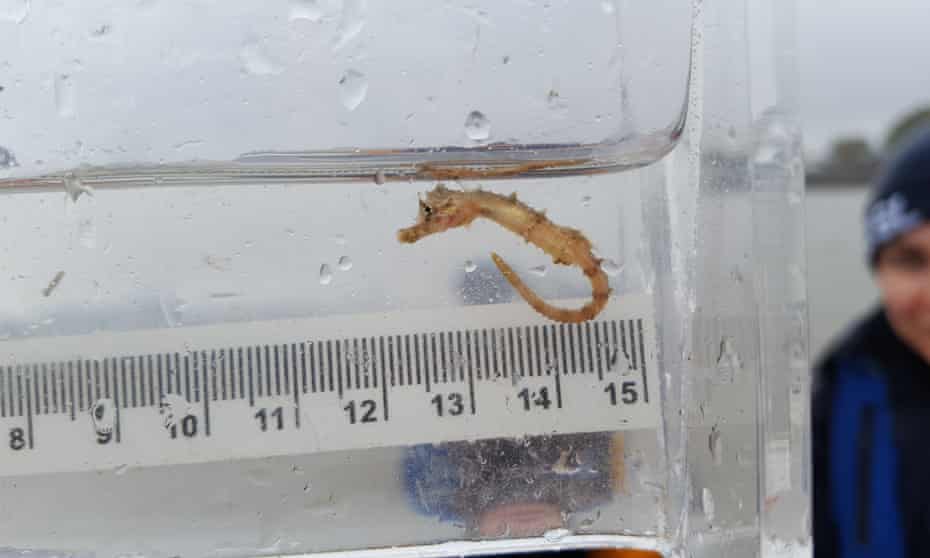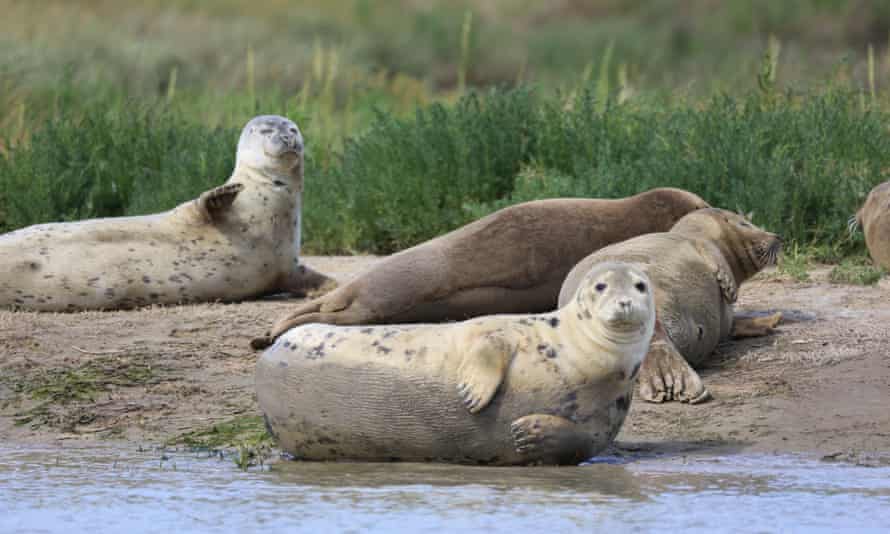Seahorses and sharks living in River Thames, analysis shows
Zoological Society of London carries out most comprehensive survey since 1950s

Seahorses, eels, seals and sharks are living in the tidal Thames, according to the most comprehensive analysis of the waterway since it was declared biologically dead in the 1950s.
But scientists from the Zoological Society of London (ZSL), who carried out the work, warn that the 95 miles of the tidal Thames is suffering from rising nitrate levels as a result of industrial runoff and sewage discharges. Water levels and temperature are also rising as a result of global heating.
On average, summer temperatures in the upper tidal Thames have been increasing by 0.19C a year since the turn of the century, the State of the Thames report said.
The scale of plastic pollution littering the tidal Thames, which stretches from below Teddington to Shoeburyness is also highlighted. As well as thousands of plastic bottles, wet wipes are a serious concern.
One mound of wet wipes in Barnes has grown in height by 1.4 metres since 2014 and covers an area of 1,000 sq metres.
“These products, many of which contain plastic, are physically altering the foreshore along the Thames by creating large mounds of sediment densely bound together,” said the report.
The density of microplastics found in the Thames was measured at 19.5 plastics per cubic metre, and microplastics flow down the river at a rate of up to 94,000 pieces per second, the report estimated.
ZSL used 17 different indicators to assess the health of the Thames’s natural environment. It highlighted the impact of dedicated conservation efforts, such as the Salt Fleet Flats reserve near the mouth of the Thames on its southern bank. The mudflats and saltmarsh habitat was created in 2016 and is home to a range of wading birds.
Species living in the Thames include seahorses and even sharks, including tope, starry smooth-hound and spurdog.
The most recent count revealed there were about 900 harbour seals and 3,200 grey seals. Since the surveys began in 2003, there has been a clear and steady increase in both seal populations in the Thames estuary.
Fish numbers have declined since the 1990s, though, with conservation scientists saying further research is needed to determine the cause.
The tidal Thames supports more than 115 species of fish, 92 species of bird and has almost 600 hectares of saltmarsh, which is a crucial habitat for a range of wildlife.
ZSL’s conservation programme lead for wetland ecosystem recovery, Alison Debney, said: “Estuaries are one of our neglected and threatened ecosystems. They provide us with clean water, protection from flooding, and are an important nursery for fish and other wildlife. The Thames estuary and its associated ‘blue carbon’ habitats are critically important in our fight to mitigate climate change and build a strong and resilient future for nature and people.

“This report has enabled us to really look at how far the Thames has come on its journey to recovery since it was declared biologically dead, and in some cases, set baselines to build from in the future.”
While levels of dissolved oxygen and phosphorus have declined, the latter as a result of better treatment of sewage since the 1990s, scientists found a long-term increase in nitrate concentrations, which can negatively affect water quality and be damaging to wildlife.
Sources of the high levels of nitrates are industrial and sewage effluent discharging into the water, according to the Environment Agency.
In addition, there are many chemicals of concern that are not being regularly monitored, with potentially harmful impacts on the wildlife of the Thames.
The Thames Tideway tunnel, known as London’s new super-sewer, which is due to be completed in 2025 at a cost of GBP3.9bn, will capture more than 95% of the sewage spills that enter the river from sewer systems, according to the civil engineers behind the project.
The ZSL report also highlights recreational use of the river, from rowing to kayaking and fishing to tourist boats. “As a diverse environment, accessible to millions of people, the tidal Thames is an important source of cognitive benefits,” the report said.
